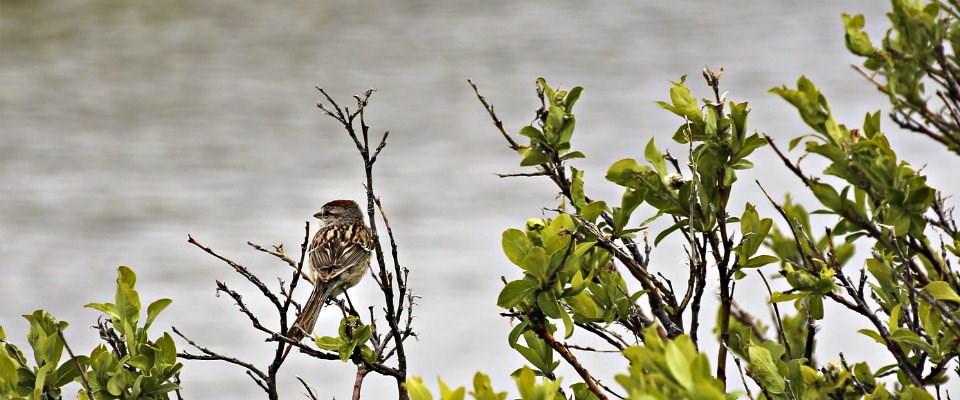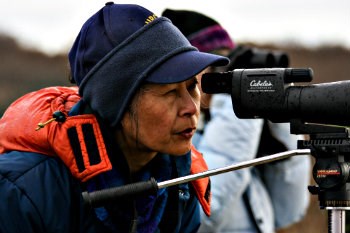
NPS Photo/Emily Mesner During the short arctic summers, Cape Krusenstern National Monument is atwitter with the chirps, tweets and squawks of visiting birds. The endless sunlight, wide open space, clear tundra lakes and a seemingly endless supply of mosquitos and other food makes Northwest Alaska a haven for birds during the summer months. Every spring, 150 species of birds (PDF 395 KB) from all seven continents fly hundreds, even thousands of miles to breed in Cape Krusenstern National Monument’s tundra, lagoon and beaches. While it is difficult to reach, Cape Krusenstern National Monument offers birders a rare chance to see an amazing variety of birds. Eiders, Bluethroats, and Yellow-billed Loons, rare elsewhere in the United States, are possible to see here. Because the Monument is located at the crossroad of the Asiatic-North American flyway, it is even possible to see Eurasian birds such as Northern Wheatears that are difficult to find elsewhere in North America. 
NPS Photo/Dave Smith
|
Last updated: December 3, 2018
